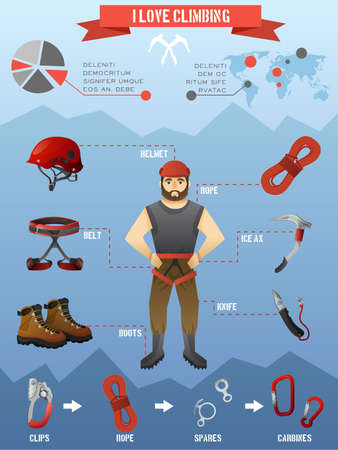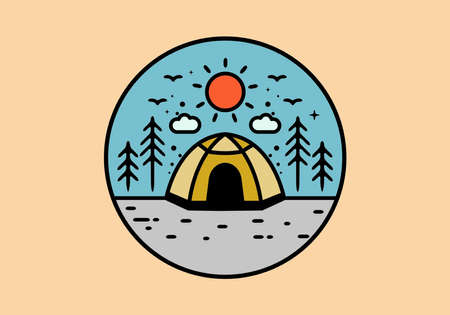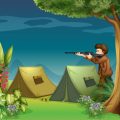Introduction to the British Countryside
The British countryside is a patchwork of rolling hills, ancient woodlands, winding rivers, and charming villages. Every footpath, hedgerow, and dry-stone wall tells a story—inviting families to explore together. Unlike many other countries, the UK boasts a unique system of rights of way, allowing walkers access to miles of public footpaths that crisscross private land. These historic paths are deeply woven into Britain’s cultural heritage and are cherished by locals and visitors alike. As you wander through fields of bluebells or navigate misty moors, understanding these traditions not only enriches your adventure but also ensures you respect the land and its keepers. For bushcraft enthusiasts and families seeking safe outdoor experiences, good navigation skills are essential. With ever-changing weather and diverse terrains, knowing how to read a map and follow a compass can transform your journey from a simple walk into an exciting shared discovery—fostering confidence and connection with nature for explorers of all ages.
Understanding Ordnance Survey Maps
When it comes to exploring the British countryside, Ordnance Survey (OS) maps are your most trustworthy companion. These maps are renowned across the UK for their detail and reliability, making them the gold standard for outdoor navigation—whether youre embarking on a gentle family stroll or a challenging bushcraft adventure. But for many, understanding all the lines, symbols, and numbers can feel overwhelming at first. Let’s break down the essentials so you can confidently interpret OS maps and make the most of your countryside journeys together.
Symbols and What They Mean
OS maps use a comprehensive set of symbols to represent everything from footpaths and stiles to churches and campsites. Getting familiar with these symbols is key to planning safe and enjoyable routes. Here’s a handy reference:
| Symbol | Meaning |
|---|---|
| —— | Public footpath |
| ······· | Bridleway |
| ▲ | Trigonometric point (Trig Point) |
| ⛪ | Church with a tower or spire |
| 🛖 | Campsite or caravan site |
The Importance of Scale
OS maps come in different scales, which affect how much area you see and how much detail is shown. The two most common for bushcraft are:
- 1:25,000 Explorer Maps: Ideal for walkers, showing field boundaries, footpaths, and landscape features in great detail.
- 1:50,000 Landranger Maps: Cover larger areas with less detail—perfect for planning longer journeys.
Decoding Grid References
Navigating with an OS map involves using grid references to pinpoint exact locations. The British National Grid system overlays the map with horizontal and vertical lines, each labelled with letters and numbers. A six-figure grid reference tells you precisely where you are within 100 metres! For example, SJ 123 456.
How to Read a Grid Reference
- Find the grid square letters on the map border.
- Read across (Eastings) then up (Northings) to get your six-figure reference.
Selecting the Right Map for Your Adventure
The best OS map depends on your activity. For detailed exploration and bushcraft skills practice, an Explorer Map (orange cover) is best as it shows small paths and natural features. For broader travel across regions by bike or car, a Landranger Map (pink cover) works well. Always check that your map covers your intended route before heading out!
A Family-Friendly Tip
If you’re venturing out with children, consider laminating sections of your OS map or popping them into clear plastic wallets—muddy hands and sudden showers are part of any good British countryside adventure! With these basics in hand, youll be ready to set off confidently, knowing you can read your map just like a local rambler.

3. Essential Compass Skills
Exploring the British countryside is a magical experience, especially when you and your family are well-prepared with essential compass skills. Learning to use a compass alongside your map not only keeps everyone safe but also adds a sense of adventure to your outdoor journeys. Here’s how you can confidently guide your family on winding footpaths, across rolling moors, or through ancient woodlands using tried-and-true navigation techniques.
Setting Bearings: The Key to Direction
First things first—setting a bearing helps you travel in the right direction, even when landmarks aren’t immediately visible. To do this, line up your map with the north using your compass, then place the edge of the compass along your intended route. Turn the housing until the orienting lines match the map’s grid north, then hold the compass flat and turn yourself until the needle lines up with north on the dial. Now, you’re ready to lead your family confidently towards your chosen destination.
Spotting Landmarks for Reassurance
The British countryside is filled with unique landmarks—ancient hedgerows, dry stone walls, church spires, and distinctive hills. Teach your children how to identify these features both on the map and in real life. Using your compass, take a bearing from a known landmark and compare it with your map position; this builds confidence and reassures everyone that you’re on track, even if paths become less defined.
Staying Safe Together
Navigation isn’t just about reaching your goal—it’s also about ensuring safety along the way. Encourage each family member to practise using the compass so everyone feels involved and secure. Should you lose sight of each other or get turned around in the misty dales or wooded lanes, agreeing on simple bearings and meeting points helps keep everyone calm and connected. These skills turn every walk into an empowering learning adventure for both children and adults alike.
4. Reading the Landscape: Terrain and Features
Exploring the British countryside is a delight for families, but it’s also an opportunity to develop keen observation skills. Understanding the landscape around you is essential for safe and confident bushcraft adventures. The British countryside offers a rich tapestry of hills, valleys, woodlands, rivers, and fields. Recognising these features in real life—and matching them with their representations on an Ordnance Survey map—is a valuable skill that brings reassurance to both parents and children as they journey together.
Relating Map Symbols to the Real World
Maps use specific symbols and colours to represent different landscape features. For example, wooded areas are often shown in green, while water features like lakes and rivers appear in blue. Contour lines indicate elevation and help you visualise hills and valleys. Learning how to interpret these symbols makes every walk feel like a treasure hunt, as you spot and name what you see around you.
Common British Landscape Features and Their Map Symbols
| Feature | Map Symbol | How to Recognise in the Field |
|---|---|---|
| Hill | Circular contour lines with increasing numbers towards the centre | A raised area; often offers panoramic views |
| Valley | Contour lines form a “U” or “V” shape pointing uphill | Lower ground between hills; usually follows a stream or river |
| Woodland | Green shading or tree symbols | Areas densely populated with trees; can be ancient forests or newer plantations |
| River/Stream | Blue line, often winding across the map | Flowing water; listen for running water or look for damp ground nearby |
Family-Friendly Ways to Practise Landscape Reading
- Pause on your walk and compare your map with what you see—can your children spot the next hill or woodland?
- Encourage everyone to notice changes in elevation by feeling how steep the path becomes as you approach contour lines close together on your map.
- Use binoculars to scan for distant features, then find them on your map—it’s a great way for children to connect their observations with navigation skills.
The Comfort of Familiarity
The more time you spend reading both maps and landscapes together, the more natural it will become. Children quickly learn to identify local landmarks, making even unfamiliar places feel welcoming and safe. By gently guiding them through these skills, you’re giving them confidence—and memories—to last a lifetime.
5. Staying Safe: Navigational Hazards and British Weather
When exploring the picturesque British countryside, staying safe is just as important as finding your way. The rural landscape is full of beauty, but it also presents unique challenges that every bushcraft enthusiast should be ready for. Let’s look at some common hazards and how to manage them with confidence.
Bogs and Marshy Ground
Bogs are a notorious feature of many UK landscapes, especially in places like the Lake District or Scottish Highlands. These soggy patches can be difficult to spot from a distance, and they’re often marked on Ordnance Survey maps as blue or green shaded areas labelled “marsh” or “bog.” Always plan your route to avoid large bogs where possible. If you must cross one, use a stick to check the ground ahead, move slowly, and never go alone—there’s safety in numbers.
Livestock and Farmland
Britain’s countryside is alive with sheep, cows, and sometimes horses grazing peacefully in open fields. While livestock are usually docile, always treat them with respect. Stick to public footpaths, close gates behind you (the country code!), and give animals plenty of space—especially mothers with young. Never try to outrun cattle; if they approach, walk calmly to the nearest exit.
The Unpredictable British Weather
If there’s one thing you can count on in Britain, it’s that the weather will surprise you! Sunshine can turn to rain in minutes and mist can roll across hills unexpectedly. Check the Met Office forecast before heading out and pack waterproofs even if the sky looks clear. Layered clothing helps you adjust as temperatures change. And remember—a compass and map won’t run out of battery when your phone gets wet!
Emergency Preparedness
No matter how well you plan, things don’t always go as expected. Carry a whistle for signalling help (six sharp blasts is the distress signal), tell someone your planned route, and bring extra snacks and water. A small first aid kit is invaluable for minor scrapes or blisters picked up along the way.
By anticipating these common hazards—from hidden bogs to sudden showers—you’ll ensure your adventures in the British countryside remain safe, enjoyable, and full of happy memories for all ages.
6. Fun Ways to Practise Map Reading with Children
Exploring the British countryside is even more rewarding when you share the adventure with young explorers. Teaching children practical navigation skills can be both enjoyable and educational, setting them up for a lifetime of outdoor confidence. Here are some playful and engaging ways to help children develop their map reading abilities while having fun together.
Turn Walks into Treasure Hunts
Transform your family stroll into an exciting treasure hunt! Mark a few landmarks or features on a simple Ordnance Survey map—such as a stile, a pond, or a distinctive tree. Let your children use the map to navigate from point to point, collecting small treasures (like leaves or pebbles) along the way. This hands-on activity not only sharpens their observation skills but also builds confidence in following a route.
Create Story-led Adventures
Bring the countryside alive by weaving stories into your walks. Pretend you’re searching for lost crown jewels in the woods or mapping out secret paths to ancient castles. Encourage children to draw simple maps of their own, marking where they imagine dragons might hide or fairies might dance. These imaginative journeys make map reading feel magical and memorable.
Play Compass Games
Introduce basic compass skills with playful challenges. For example, set up a “North-South-East-West” race, where children must dash in the right direction when you call it out. You could also create a mini orienteering course in your garden or local park, using map symbols and compass bearings as clues. These energetic games reinforce directional awareness and symbol recognition.
Map Symbol Bingo
Print out bingo cards featuring common map symbols found on UK Ordnance Survey maps—like churches, campsites, or picnic areas. As you walk, encourage your child to spot these features on the map and in real life, marking them off as they go. The first to complete their card wins a prize—a great way to keep little ones engaged and curious!
Encourage Questions and Curiosity
Every outing is an opportunity for learning and bonding. Invite questions such as “What does this line mean?” or “How far do you think we’ve walked?” Take time to explain scale bars, contour lines, and grid references at their level. Celebrate mistakes as part of the adventure—it’s all about discovering together.
By embracing these interactive activities, you’ll nurture your child’s natural curiosity while equipping them with essential bushcraft navigation skills rooted in British tradition. Together, you’ll build not just strong navigators, but lifelong lovers of the great outdoors.


